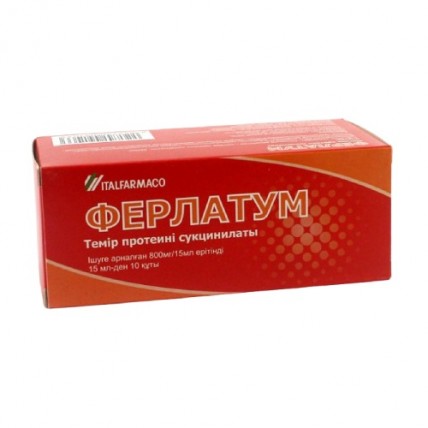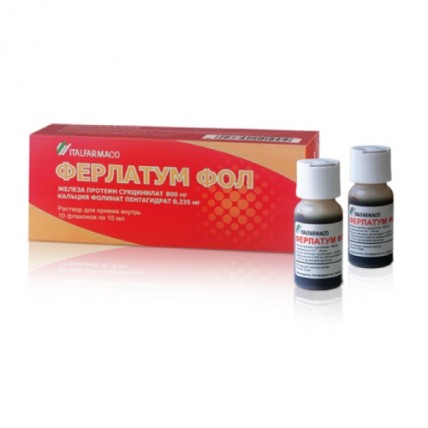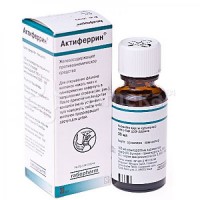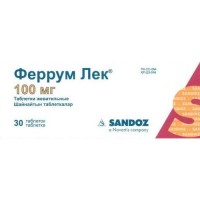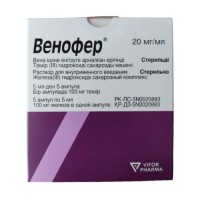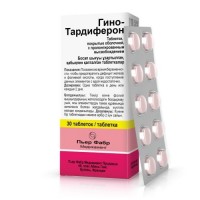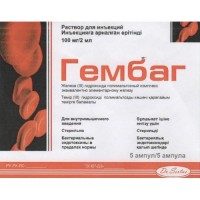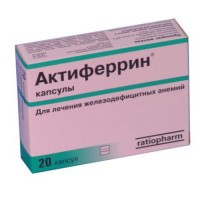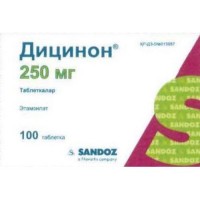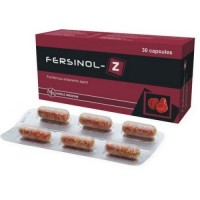Ferlatum/Ferlatum Fol (Iron Protein Succinylate) 15ml x 10 vials
- $28.00
What is Ferlatum?
Ferlatum is an iron supplement containing iron protein succinylate, a compound designed to treat iron deficiency and iron-deficiency anemia in both adults and children.
This supplement is particularly beneficial for individuals experiencing chronic blood loss, pregnant and breastfeeding women, and those with other conditions leading to low iron levels.
Its liquid form allows for easy absorption and effective replenishment of iron stores in the body.
What is Ferlatum Fol?
Ferlatum Fol is a combination supplement that contains iron protein succinylate and folic acid (in the form of calcium folinate).
This formulation is intended to treat and prevent deficiencies in both iron and folate, making it suitable for individuals with anemia caused by inadequate intake of these nutrients.
It is often prescribed during pregnancy and lactation, as well as for those with certain types of anemia, such as macrocytic anemia, which involves folate deficiency.
How Should Ferlatum and Ferlatum Fol Be Used?
Although both products are used to manage anemia, their dosages and methods of use have some differences. Here is a breakdown of how each should be taken:
Ferlatum:
- Adults: The standard dosage is 1-2 vials (15 ml each) per day, delivering 40-80 mg of iron (Fe3+). This dosage is generally split into two doses and taken before meals for optimal absorption.
- Children: The recommended dose is 1.5 ml per kilogram of body weight per day, which provides around 4 mg of iron per kilogram. This should be taken in two doses, preferably before meals.
Ferlatum Fol:
- Adults: The dosage is also 1-2 vials per day, delivering 40-80 mg of iron and 0.235-0.470 mg of calcium folinate. The dosage is split into two and should be taken before meals as recommended by your healthcare provider.
- Children: The dosage remains the same as for Ferlatum, at 1.5 ml per kilogram of body weight per day, providing approximately 4 mg of iron per kilogram. The dose is divided into two and taken before meals.
For both Ferlatum and Ferlatum Fol, the contents of the vial can be consumed directly or mixed with water.
Shake the vial well before use, and consume the contents immediately or within 24 hours after preparing.
Duration of Treatment: The treatment typically continues for 2-3 months or until iron levels are normalized.
In certain cases, such as ongoing blood loss or pregnancy, the treatment may be extended according to medical advice.
What Is the Difference Between Ferlatum and Ferlatum Fol?
Although both products aim to treat anemia, they differ in composition and the types of deficiencies they address:
Ferlatum:
Contains iron protein succinylate as its sole active ingredient, focusing solely on treating iron deficiency and iron-deficiency anemia. It is often prescribed for people with low iron levels due to chronic blood loss, pregnancy, or lactation.Ferlatum Fol:
Combines iron protein succinylate with folic acid (calcium folinate). This makes it a more comprehensive treatment for anemia, particularly for individuals who need both iron and folate. Folate is essential for DNA synthesis and red blood cell formation, making Ferlatum Fol particularly suitable for pregnancy, lactation, and certain types of anemia, such as macrocytic anemia, which involves folate deficiency.
In short, Ferlatum focuses solely on replenishing iron, while Ferlatum Fol addresses both iron and folate deficiencies, making it more suitable for conditions where both nutrients are needed.
What are the possible side effects of Ferlatum and Ferlatum Fol?
Common side effects include:
- Gastrointestinal issues such as constipation, diarrhea, nausea, or stomach discomfort.
- Iron supplements may also cause the stool to become dark in color, which is a harmless effect.
If side effects occur, reducing the dosage or discontinuing use may help alleviate symptoms. In the event of an overdose, symptoms like abdominal pain, nausea, vomiting, and bloody diarrhea may arise. Immediate medical intervention, including stomach emptying, may be necessary.
Can Ferlatum interact with other medications?
Yes, Ferlatum and Ferlatum Fol may interact with certain medications, such as:
- Tetracyclines
- Bisphosphonates
- Quinolones
- Thyroxine
- Levodopa
- Antacids
It is advised to take these medications at least two hours apart from Ferlatum to avoid any absorption issues. The absorption of iron may be increased when taken with more than 200 mg of vitamin C, while certain foods and drinks, such as coffee, tea, and dairy, can reduce iron absorption.
What precautions should be taken with Ferlatum and Ferlatum Fol?
- Allergies: Patients with allergies to milk proteins or fructose should be cautious, as Ferlatum contains sorbitol and milk-derived proteins.
- Special Ingredients: Ferlatum and Ferlatum Fol contain sorbitol, which may affect the absorption of other oral medications.
- Sodium Content: Each vial contains 46.7 mg of sodium, which is important for those on a low-sodium diet.
- Pregnancy and Breastfeeding: These supplements are recommended for managing iron and folate deficiencies during pregnancy and breastfeeding.
How should Ferlatum and Ferlatum Fol be stored?
Store both products at temperatures below 25°C (77°F) and ensure they are kept out of reach of children.
Do not use them after the expiration date.
